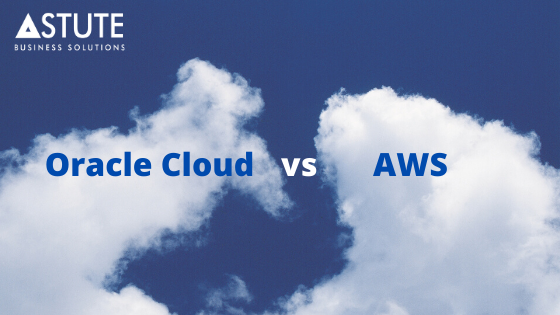COVID-19 Accentuates the Need for Cloud Migration in Higher Education

Table of Contents
The COVID-19 pandemic has had a dramatic impact on every organization — businesses, nonprofits, and governments. But it could be argued that higher education institutions were impacted more than most other sectors.
The COVID-19 pandemic has had a dramatic impact on every organization — businesses, nonprofits, and governments. But it could be argued that higher education institutions were impacted more than most other sectors. Not only did they scramble to scale systems to accommodate remote work by employees, but they also had to turn on a dimeto convert all their product offerings to a virtual delivery model. This wasa big challengefor many of their students.This transformation was sudden, costly, and necessary for institutions. Technology had to be scaled quickly, faculty had to adaptcourses and teaching methods, and staff had to be creative to accommodate students whose lives were disrupted. At the same time, most colleges and universities saw asteep declinein revenue as dormitories and food services were shut down, many students opted to take a gap year in 2020-21, and many U.S. states cut higher education allocations to balance their budgets.
High Hopes for a Return to Campus
With vaccination programs in full swing in developed countries, there is hope that lonely campuses around the world will soon team with energy again. But will things ever returnentirely to the pre-COVID normal? All indications are that higher education consumers will demand more from institutions than they have in the past when it comes to digital services:
- Student expectations will grow for cloud-based, mobile device interaction with the campus.
- Even on-campus students will expect more distance learning options after they return.
- Entirely online degree programs, which have been growing for years, will beeven more in demand.
The problem is that at most institutions, core functions of the campus like student records, housing, meal plans, human resources, and finance are housed in complex, legacy on-premises applications that lack the resiliency to adapt to these changing needs. This software has occupied the data center for decades, often with homegrown customizations and workarounds that make even version upgrades complex and difficult.
Get to know how the cloud will help you
Higher education institutions have specialized needs and requirements to be met.
The Cloud: Bringing the Campus into the 21st Century
Because ofthese and other factors, I think it is inevitable that higher education institutions will accelerate their move to the cloud in the next two to three years. As I like to say, cloud migration is not a matter of “if,” but “when.” The trends emerging from the pandemic have made such a strategy even more urgent. And the move to the cloud must include the core applications that now sit in the data center.
Yet such a move seems daunting to colleges and universities, especially for the small and mid-sized institutions that have lean IT teams. One reason for this is that they see migration as a single project. They assume that every long-term goal needs to be accomplished at the same time, and this makes it feel even more unattainable. But if institutions understand cloud migration as a process rather than an event, it feels more doable. Here are some steps they can take to avoid pitfalls:
1. Road Map Planning: A Journey With Multiple Stops
The best road trips involve more than a beginning point, a destination, and a lot of boring driving in between. When the itinerary includes multiple stops, travelers can partake in a variety of experiences and enjoy the journey. Similarly, a move to the cloud is best seen as a series of improvements on the path to a resilient campus.
And while some see an immediate switch to a software-as-a-service (SaaS) delivery model as the only way to “move to the cloud,” making that move in a single step does not make sense for most institutions. Factors such as the maturity level of specific SaaS offerings, which cloud providers they utilize, and the benefits of staying with an existing application argue for such an approach.
Rather than simply taking the leap into the cloud,Stony Brook University in New York conducted extensive workshops to plot their cloud migration road map — including strategy, technology, and process. Because they took the time to do this strategic planning, the resulting migration project resulted in a projected $1 million in savings for the institution over five years.
2. Fast Migration: Minimizing Transition Chaos
There is no good time of the academic year for a cloud transition, and a long, drawn-out process would be unacceptably disruptive. Fortunately, a “lift and shift” methodology can accomplish the migration of a key application quickly and with minimal downtime. TheUniversity of Idaho used this methodology to migrate its student ERP system to the cloud in just 12 weeks with a “lift and shift” approach, with minimal disruption.
3. Ongoing Management: Adding Value Over Time
Once cloud migration is no longer seen as a single, one-time project, it is possible to visualize how managed services can unlock value over time, enabling employees to focus on the school’s mission while entrusting ongoing management to experts.Gallaudet University in Washington, D.C., achieved $600,000 in cost savings and a 70 percent performance improvement through a sustained managed services engagement to optimize the financial management, human capital management, and student information systems for the institution, which were newly migrated to the cloud.
4. Bridge Technologies: Building a Foundation for the Future
While colleges and universities make significant gains simply from migrating their enterprise applications to the cloud, there are many side benefits from the high-performance computing available in the cloud. For example, chatbots can be connected to an institution’s ERP or CRM system, enhancing the experience of students and prospective students with a conversational user interface. Cloud analytics can help colleges and universities make better decisions about operations, academic programs, and even marketing. And the cloud also offers the opportunity for a disaster recovery solution that is resilient and cost-effective.
Focusing on What Matters
Moving critical applications to a cloud infrastructure frees up staff time to work on things that advance the mission of a higher education institution — improving enrollment figures, the quality of the learning experience, and student outcomes. A comprehensive, holistic approach to the migration process will help colleges and universities modernize their systems and improve efficiency and availability, all while reducing costs. This can help them meet student expectations as well as business goals.
Equip your Institution with today’s growing demands
Technology can help you impart education more effectively. Discuss with an Astute expert today to know more.
Arvind Rajan is Co-Founder and CEO of Astute Business Solutions. He is leading the expansion of Astute services to include Cloud Managed Services, Disaster Recovery on Cloud, and Integration and Process Automation using Platform Cloud Services.
Search
Related Posts
Subscribe Our Newsletter
Gain access to exclusive insights, technical know-how and crucial knowledge from Astute experts.
Share Article
See The Team In Action
Upcoming Events
Reach Out
Ready to Connect?
Please fill the following form, we will get back to you within a business day.
Contact Form
Contact Us
.jpg)


